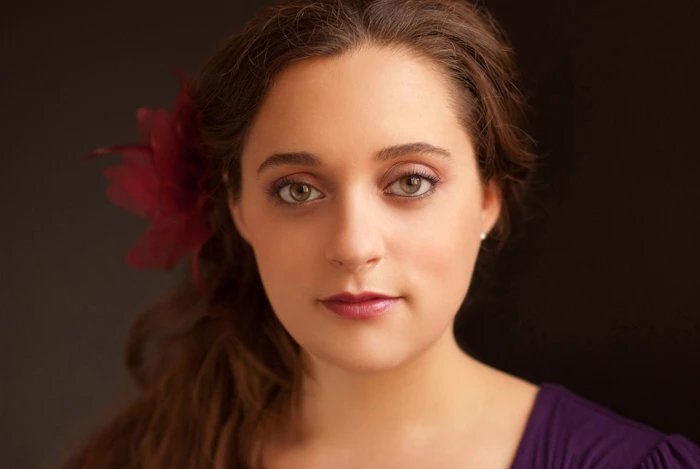Festival 2018 Finale
Teresa Wakim
Here's The Day's review of our final concert on 24 June:
New London — Teresa Wakim, a soprano from Noank, helped bring the 2018 Connecticut Early Music Festival to a resounding conclusion Sunday in an all-Mozart concert that had the audience of about 300 at Connecticut College's Evans Hall riveted.
Wakim, winner of the 2010 first prize at the International Soloist Competition for Early Music in Brunnenthal, Austria, showed off her dazzling colatura ability in Mozart's Exsultate jubilate, K. 165. Adding ornamentation to the beautiful melody, her voice floated above the talented Connecticut Early Music Ensemble, painting swirls of color that cascaded in a rich vanilla timbre thanks to a warm and controlled vibrato.
The gorgeous waterfall of notes in the andante section gave way to a spine-tingling conclusion in the thrilling allelujah finale that had the crowd on its feet in appreciation.
As good as Wakim was, the rest of the night belonged to Early Music artistic director Ian Watson and his amazing ensemble of just over 20 players. After a playful rendition of Mozart's short overture from Bastien et Bastienne, K. 50, Watson played the early form of a piano in Mozart's Fortepiano Concerto No. 21 in C, K. 467, then concluded by directing the "Jupiter" symphony, No. 41.
Watson is an immense talent on the fortepiano, able to make the difficult instrument respond to both his subtle and strenuous touches. He set a dancing tempo in the concerto's allegro maestoso section as he somehow conducted the piece from amidst the rest of his players.
The andante section, with its sweet and melancholy melody, was like a flower slowly revealing its petals, while the concluding allegro had a manic edge of energy that seemed to embody the whimsicality of a Robin Williams comic dissertation.
The two-hour concert, dedicated to Early Music patron Marion S. Palm, who was in attendance, concluded with the well-known "Jupiter" symphony, K. 551, and this piece called for all the ability of the ensemble, who were playing on instruments with sounds similar to what Mozart had in mind.
The ensemble came through, from its scintillating string section to its talented woodwinds, undermanned brass and kettle drum. The ecstatic melody of the opening allegro vivace section has never been so alive, every accent and change of dynamics strictly adhered to.
The lush andante was followed by a minuetto that turned into a fun and quirky dance, while the concluding molto allegro section, taken almost impossibly fast, had both orchestra and audience in a lather of expectation as it charged toward the brilliant conclusion as the crowd for a third time offered a standing ovation in appreciation for the conclusion of the 36th annual festival.
